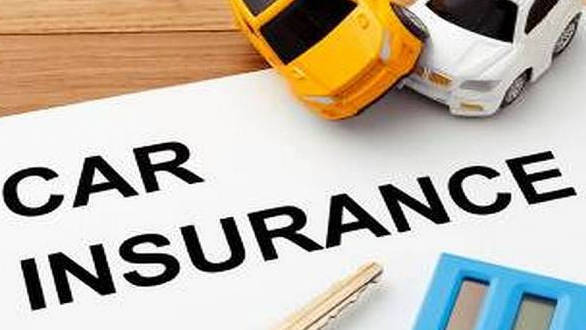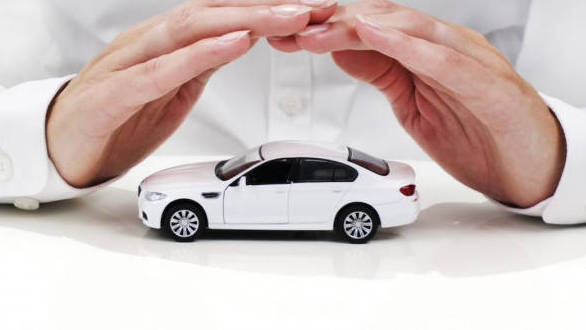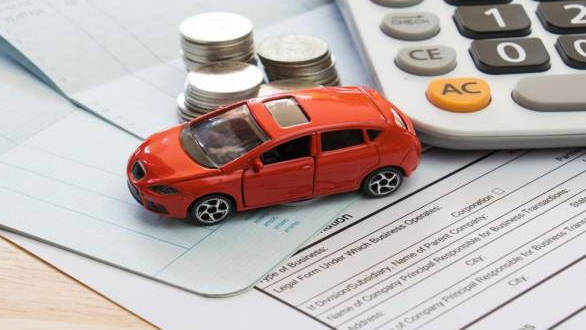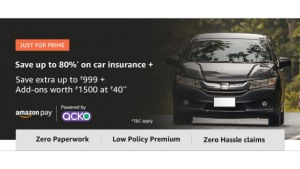All you need to know about motor insurance
Insurance is not novel, neither is motor insurance. But every once in a while, we either buy a new car and/or renew insurance. By law, it is compulsory to avail motor insurance under the Motor Vehicle Act and hence, if you own or ever dream of owning a car, buying insurance is going to be an integral part of the ownership experience. Also, off-late, insurance has become more and more expensive and believe it or not, you can actually save thousands of rupees in premium every year if you put a little effort into it. Now that we have you hooked, let us visit the basics of insurance.

First is types of policies in terms of liability of the insurance company to pay damages of whatever kind. Broadly, there are two types of policies in motor insurance:
- Third Party insurance This is mandated by law in India and does not cover the vehicle owner and the vehicle itself. In case of a mishap that leads to damage of third party property or bodily harm to a third person, the liability of expenses incurred towards repair or compensation is taken care off by the insurer. The beneficiary is only the third party and the insured/owner does not get compensated.
- Comprehensive insurance Also called first party insurance, this policy covers the mandated third party liabilities and in addition, covers own damages as well, including damage to property, vehicle or self. Different policies are offered by insurers depending upon the extent of cover and the premiums depend upon the levels of cover and the options chosen from the bouquet of offerings. Comprehensive insurance is usually much more expensive than third party insurance.
How is Motor Vehicle insurance premium calculated?
While the math is a little complicated, there are multiple factors that go into calculating premium of comprehensive insurance as mentioned below.
- Insured Declared Value Also known as IDV, it is the current valuation of the car depending upon its current condition. It is also the maximum amount in damages the insurer will pay to get the car repaired.
To calculate IDV, the invoice price of the car is written down as per the age of the car in number of years.
The written down value is then further adjusted for the condition of the car. Eg. A well maintained car will always be valued more than a car with dents and scratches and in need of mechanical repairs.
The basic premium is then calculated as a percentage of the IDV as mandated by the IRDA.
- Cubic capacity Cubic capacity is used to calculate third part insurance premium and the amount depends upon the slab in which the cubic capacity of your vehicle falls in to.
- Location Insurance companies have divided India into two geographical zones Zone A and Zone B. Zone A includes metropolitan areas like Mumbai, Delhi, Bengaluru and other high vehicle density areas where the probability of accidents or theft is comparably higher. Zone B includes the rest of India and since the risk is lower, the benefit is passed on to the customer in form of a lower premium than Zone A.

The basic comprehensive insurance policy covers the following
- Loss or damage due to Natural calamities Includes events out of human control like earthquakes, floods, landslides etc.
- Loss or damage due to Man-made calamities Theft, riots, terrorist activities etc. and road accidents.
- Personal Accident cover The driver/policy holder is entitled for compensation in event of death or permanent disablement. *Co-passenger insurance is an optional add-on.
- Third Party Liability - As covered in the Third party Insurance policy.
As we have mentioned before, the premium is also decided by the add-ons opted for over the standard comprehensive policy. While we are compiling a general list of add-ons, individual insurers might offer a few more options, of course at a price.
- Zero-Depreciation cover As the name suggests, this add-on discounts the ageing and the resultant depreciation of the vehicle for IDV calculation. This is also called the bumper-to-bumper insurance as it covers your entire car keeping its value as new. Obviously, the premium is hefty in this case, but, it certainly comes handy in case of an eventuality.
- Engine protection cover Engine is the heart of the car and also susceptible to damage. In case you may have to drive through a flooded section, there is a chance of the engine suffering from hydrolock if the water gets into the engine through reverse suction. The engine will suffer a catastrophic failure and you will either have to rebuild the engine or replace it, depending upon the expenditure incurred. It is a good add-on to have especially in India where road-flooding is regular in monsoons.
- Consumables cover Consumables like oils, coolants, brake pads, wheel bearings can also be covered under insurance and you will have to vet the list before you add this to the insurance package
- Invoice cover There are cases of theft or accidental damage where the car is beyond repair or the cost of repair is over and above the price of the car. The invoice cover, will then help you get the invoice price of the car as insurance payout. This again is a pricey add-on but worth in states like Delhi and UP where car thefts are a common occurrence.
- NCB protect cover No-claim bonus is given to the customer if there are no insurance claims within the insured period and is set-off against the next premium. Since no-claim bonuses are substantial, a NCB protection cover will make sure that for a little extra cost paid beforehand can save a good chunk of money.

How to reduce your insurance premium?
Globally, car insurance premium calculation also includes profiling. Which means, a person with a clean record on the driving license in terms of driving offences will be offered a lower premium than the one with violations. Also, as we said before, a well maintained car will fetch a lower premium. While the concept of profiling is still nascent in India, insurers have begun installing OBD-based telematics devices with smartphone applications to track vehicle data for profiling. Thus, if you opt for the device and drive sincerely, the insurer will find you a low-risk customer and will discount the premium.
Another way is, not claiming insurance unless it is a big-ticket damage repair. With insurance premiums running in lakhs for premium cars, if you do not claim insurance, the no claim bonus might run into tens of thousands and as the years go by, it saves up quite a big amount as you are categorized as a low-risk customer.
The next part involves opting for the right add-ons. Like the ones we have mentioned, insurance companies have special packages and you need to do a little diligence before opting for them.
Finally, it boils down to research and negotiations. In the competitive open market, insurers offer different packages and you can use insurance comparison websites available on the internet to compare the premiums being offered. In cases, you can also negotiate with an insurer, if he/she is willing to poach you from a competitor, to bring down the premium or increase the IDV, because in either case, it is profitable for the customer.
After doing all of this, it is necessary to spend those few minutes to read the final insurance document and understanding the terms and conditions, because, when it comes to claim, it is always better to know the procedures well to avoid rejection.














